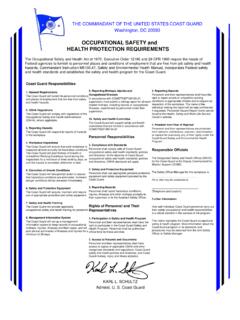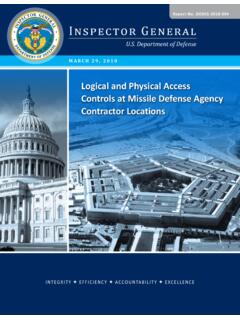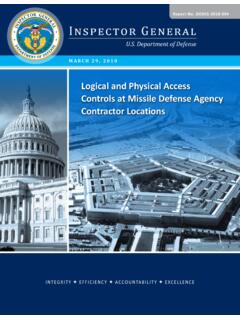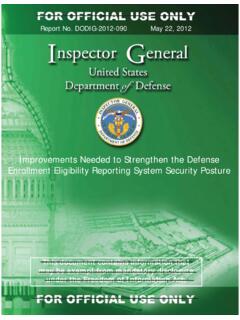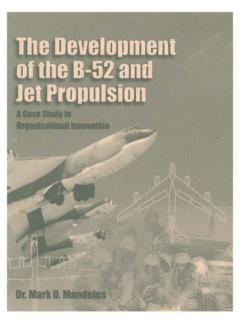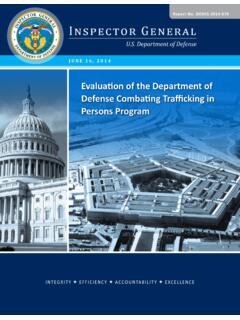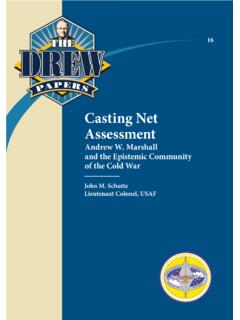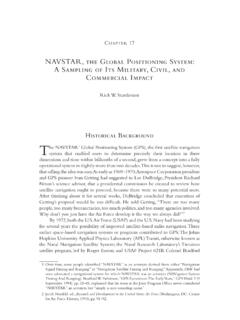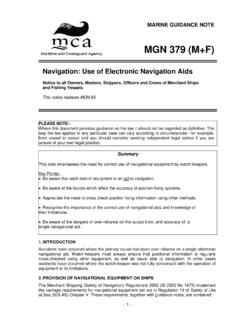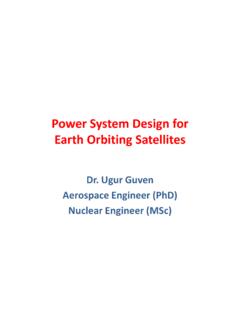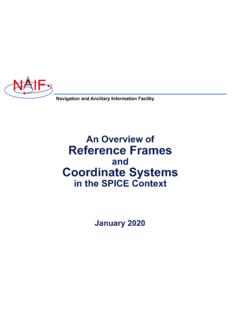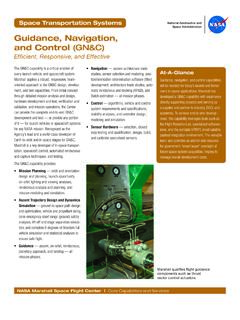Transcription of TRENDS IN SPACE
1 NASIC Public Affairs Office4180 Watson WayWright-Patterson AFB, OH 45433-5625(937) Date: December 2018 After the Cold War, the United States dominated SPACE . Over the past two decades, an emergent China and a resurgent Russia developed advanced technologies that eroded our advantage. Foreign competitors are integrating advanced SPACE and counterspace technologies into warfighting strategies to challenge superiority and position themselves as SPACE demand and declining cost for high-quality SPACE -based services have increased the number of systems in SPACE and the number of countries or multinational organizations that can access SPACE capabilities.
2 The number of foreign reconnaissance and remote sensing satellites has tripled from 100 to 300. Foreign satellite communications, navigation , and launch services are increasingly available to competitors. China and Russia remain leaders in SPACE launch and SPACE -based adversaries are developing and proliferating anti- satellite capabilities supported by an array of sensors to characterize and target SPACE systems. Multiple attack options ( , cyber, electronic, or directed-energy weapons; anti- satellite missiles; or SPACE -based weapons) enable potential adversaries to achieve a range of damaging effects.
3 This publication identifies developing TRENDS in the SPACE domain, details growing challenges posed by foreign SPACE assets, characterizes threats to and allied use of SPACE , and presents an outlook for the evolution of these TRENDS .* SPACE systems shown throughout this document are not to scale1 COMPETING IN SPACE23 SPACE technologies play a fundamental role in the day-to-day affairs of the public, businesses, governments, and militaries worldwide. satellite remote sensing, communications, and navigation systems enable real-time access to information necessary to connect people, operate a global economy, respond to natural disasters, and support military operations.
4 While technological advancement in the SPACE domain has created new opportunities, it has also created new risks and vulnerabilities across these sectors. For the and its allies, maintaining the leading edge in warfighting requires understanding evolving TRENDS in the SPACE IN SPACES pace is Contested, Congested, and CompetitiveCompetitors are developing technologies that contest and allied SPACE systems and services. Reduced costs of SPACE technologies and launch services have supported explosive growth in the number of objects in SPACE and enabled numerous countries to acquire advanced technologies, boosting their own SPACE industries and countering competitive Capabilities are VulnerableThe global economy and civilian population are dependent on SPACE systems.
5 And allied militaries use SPACE systems to connect, warn, guide, and inform decisions across the entire spectrum of conflict. Adversaries are aware of the advantages SPACE services provide and actively seek capabilities to deny them. SPACE is Increasingly MilitarizedBoth China and Russia are developing new SPACE capabilities to achieve military goals and reduce their reliance on SPACE systems. Through military reforms, China and Russia have organized new military forces devoted to the employment of SPACE and counterspace capabilities and regularly integrate them into military exercises.
6 Meanwhile, these countries continue to develop, test, and proliferate sophisticated anti- satellite weapons to hold and allied SPACE assets at Norms Remain ElusiveOver the past decade, international forums have pursued legal frameworks for responsible conduct in SPACE . To date, the international community has not achieved a global consensus on new laws or norms despite efforts to increase transparency in SPACE operations, avoid deliberate debris-generating events ( , anti- satellite weapon tests, orbital collisions), and prevent the placement of weapons in SPACE .
7 China and Russia continue to endorse a draft Treaty on the Prevention of the Placement of Weapons in Outer SPACE , the Threat or Use of Force Against Outer SPACE Objects (PPWT). While this draft promotes no first placement of weapons in SPACE , it fails to address a variety of anti- satellite weapons and lacks meaningful verification mechanisms. Furthermore, despite publicly insisting that SPACE is a peaceful domain, these competitors are continuing development of several anti- satellite Proliferation Driving the Increase in Competitive SPACE ActorsHistorically, high cost and technical complexity limited SPACE access to a select few SPACE powers.
8 Over the past few decades increased commercialization and affordability of SPACE technologies means satellites are no longer restricted to a few SPACE powers. Today, over 50 countries and multinational organizations own or operate SPACE assets, while China and Russia maintain the largest foreign SPACE system ASSETS ON ORBITR econnaissance and remote sensing satellites collect images, electronic emissions, and other data across the globe to meet a variety of customer needs. There are a number of civil and commercial applications for remote sensing data, such as environmental monitoring, urban planning, and disaster response.
9 High demand for this data and falling costs for capable technology have spurred the rapid growth and proliferation of these satellites. A decade ago, foreign remote sensing satellites numbered nearly 100 -- by mid-2018, that number reached over addition to civil and commercial uses, these satellites provide military and intelligence collection capabilities. They have reduced the ability of all countries to perform sensitive military activities undetected. The images on the right show Chinese commercial imagery of several sensitive locations.
10 China and Russia have the largest remote sensing satellite fleets outside the Additionally, the Chinese People s Liberation Army (PLA) and the Russian Ministry of Defense are reportedly capable of employing their respective civil and commercial remote sensing satellites to supplement military-dedicated capabilities. As of May 2018, the Chinese reconnaissance and remote sensing fleet consisted of more than 120 satellites designed to collect data for civil, commercial, or military owners and operators.
